Science of Backyard Composting: Understanding the Benefits and Techniques
Are you tired of throwing away food waste and contributing to landfills? Backyard composting is a simple solution that can help reduce waste and provide nutrient-rich soil for your garden. Read on to learn the science of backyard composting and download a free “Beginner’s Guide to Composting” workbook!
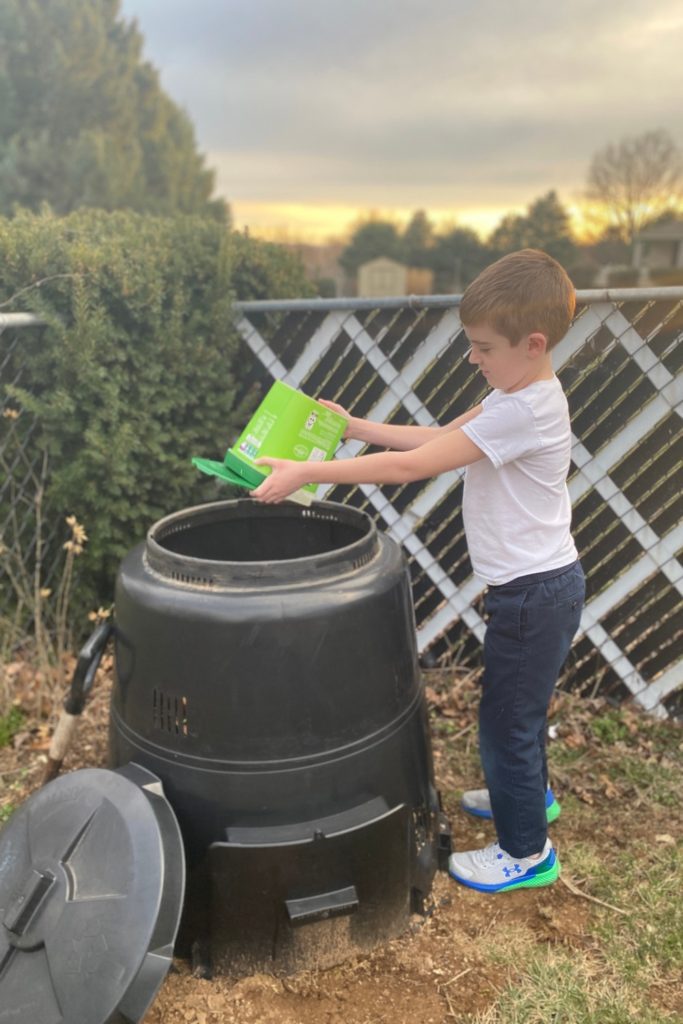
In an effort to make my educational resources freely accessible, this post contains affiliate links, in which I will make a small commission if you choose to purchase an item from the links provided. Thank you in advance for your support.
Composting is a natural process that breaks down organic matter into a nutrient-rich soil amendment that can be used to improve soil quality and plant growth.
To start composting, you’ll need a compost bin or pile, organic matter such as food scraps, yard waste, and leaves, and a little bit of patience. The key to successful composting is to maintain the right balance of carbon-rich and nitrogen-rich materials, moisture, and air. Composting can help reduce greenhouse gas emissions and conserve water by diverting organic waste from landfills.
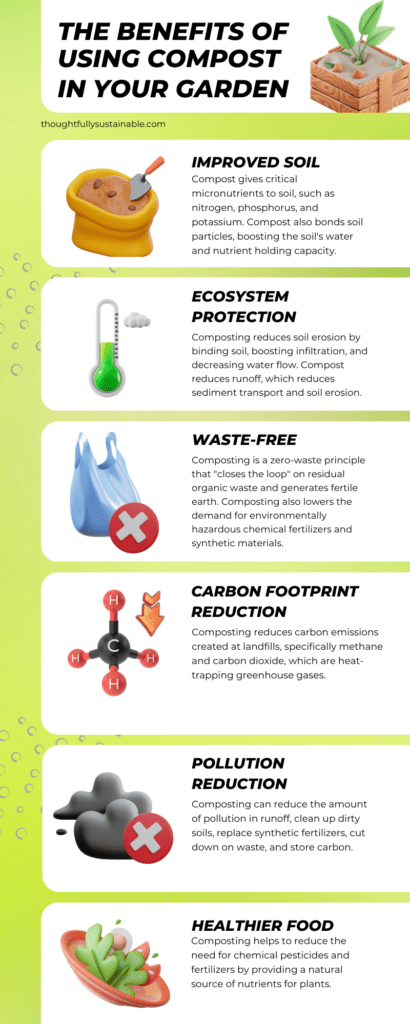
Benefits of Backyard Composting
Reduction of Landfill Waste
By composting your kitchen scraps and yard waste, you can significantly reduce the amount of organic material that ends up in landfills. According to the Environmental Protection Agency (EPA), food scraps and yard waste make up about 30% of what we throw away. When these materials decompose in landfills, they produce methane and carbon dioxide, two greenhouse gases that contribute to climate change. By composting, you can divert this organic matter from landfills and turn it into a valuable resource for your garden.
Improvement of Soil Quality
Compost is a nutrient-rich soil amendment that is a great way to improve the quality of your soil. When you add compost to your garden, it helps to retain moisture, improves soil structure, and provides a slow-release source of nutrients for your plants. Compost also helps to promote healthy soil biology by providing a habitat for beneficial microorganisms that can help to suppress plant diseases and pests.
Conserving Resources
Composting reduces the need for chemical fertilizers and pesticides, which can harm the environment and deplete natural resources. By using compost, you can create a closed-loop system where organic matter is recycled back into the soil.
Saving Money
Composting can save money by reducing the need for commercial fertilizers and soil amendments. It can also reduce the cost of waste disposal, as less waste is being sent to landfills.
Supporting a Circular Economy
Composting supports a circular economy, where waste is viewed as a resource rather than a problem. By composting, we can close the loop on the nutrient cycle and create a more sustainable system.
Overall, backyard composting is a simple and effective way to reduce waste, improve soil quality, and promote a healthy environment. By taking advantage of the benefits of composting, you can create a more sustainable and productive garden while reducing your impact on the planet.
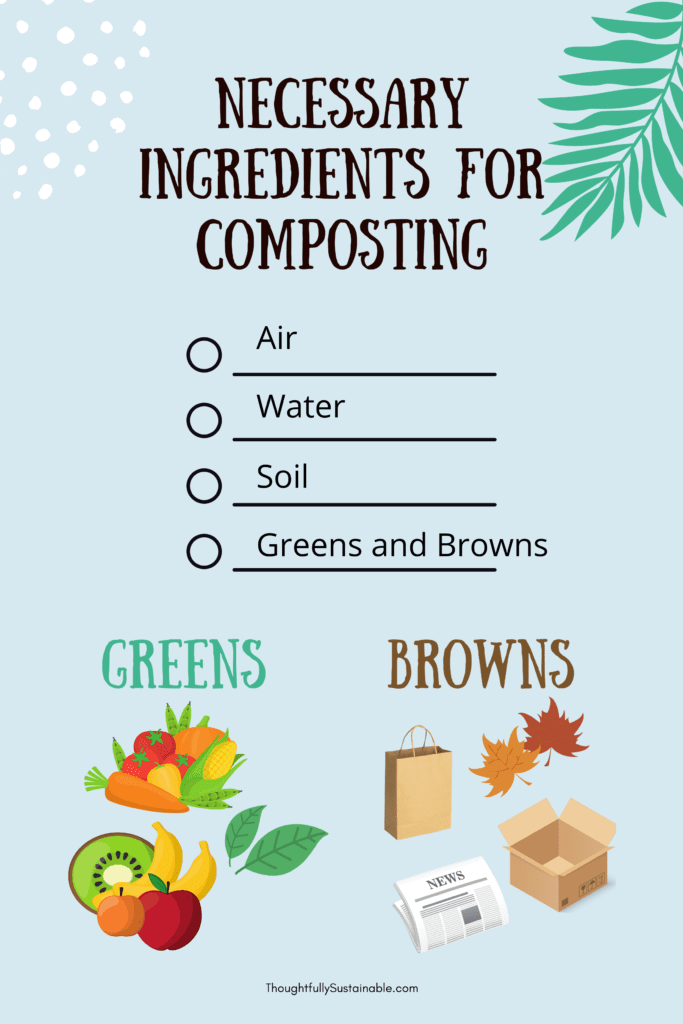
Science Behind Backyard Composting
Decomposition Process
Composting is a natural process of decomposition that turns organic materials into nutrient-rich soil. In your backyard, you can create a compost pile or bin that mimics the natural decomposition process. The decomposition process is carried out by microorganisms, such as bacteria, fungi, and actinomycetes, that break down the organic materials into simpler compounds.
The decomposition process requires four essential elements: carbon, nitrogen, oxygen, and moisture. Carbon-rich materials, such as dry leaves, straw, and wood chips, provide the energy source for microorganisms. These carbon-rich sources are often referred to as brown materials. Nitrogen-rich materials, such as grass clippings and food scraps provide the protein source for microorganisms. Sources high in nitrogen are referred to as green materials. Oxygen is necessary for the aerobic decomposition process, which is faster and produces less odor than anaerobic decomposition. Moisture is necessary to keep the microorganisms alive and active.
Role of Microorganisms
Microorganisms play a crucial role in the composting process. Bacteria are the primary decomposers that break down the organic materials into simpler compounds, such as sugars and amino acids. Fungi are the secondary decomposers that break down the tougher materials, such as lignin and cellulose. Actinomycetes are the slow decomposers that break down the complex compounds, such as fats and waxes.
Microorganisms require specific conditions to thrive and carry out the decomposition process. They need a balanced carbon-to-nitrogen ratio, which is typically 30:1 for optimal decomposition. They also need a temperature range of 110-160°F to speed up the decomposition process. The ideal pH range for microorganisms is between 6.0 and 8.0. If the pH is too acidic or too alkaline, the microorganisms will not thrive.
By understanding the science behind backyard composting, you can create a healthy and productive compost pile or bin in your backyard. By providing the right conditions for microorganisms, you can turn your organic waste into nutrient-rich soil that can be used to enrich your garden and reduce your carbon footprint.
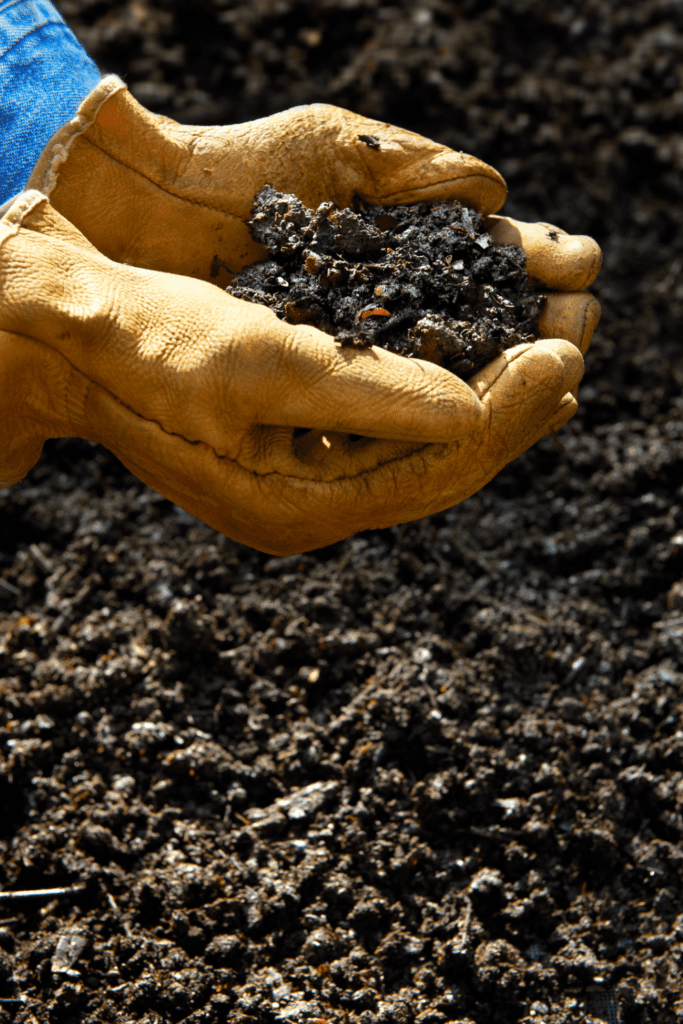
Discussing the Stages of Composting
The process of composting can be broken down into three stages:
Mesophilic Stage
The first stage is the mesophilic stage, where the microorganisms break down the easy-to-decompose materials, such as sugars and starches, and generate heat. The heat generated by the microorganisms can raise the temperature of the compost pile to about 70-90 degrees Fahrenheit.
Thermophilic Stage
The second stage is the thermophilic stage, where the temperature of the compost pile rises to about 130-160 degrees Fahrenheit. This stage is critical for killing off any pathogens and weed seeds in the compost. This stage is reached in industrial composting facilities where the volume of decomposting organic materials is quite large. This stage is harder to obtain in a backyard compost setting, due to the smaller volume of organic waste. For this reason, you should avoid adding animal and dairy products to a backyard compost bin, as they will not reach ideal temperatures for decomposition and may create unpleasant odors.
Curing Stage
The final stage is the curing stage, where the compost is left to mature and stabilize. During this stage, the microorganisms continue to break down the organic matter, but at a slower pace. The finished compost is ready to use when it has turned into a dark, crumbly material with a pleasant earthy smell, known commonly as “black gold”.
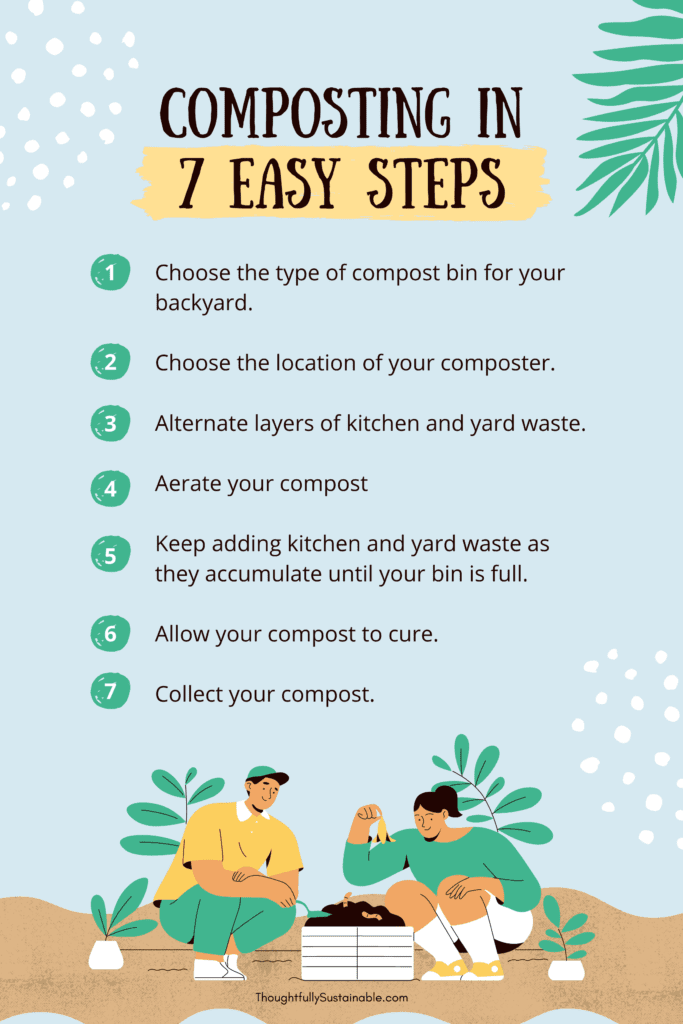
How Do I Start Composting in My Backyard?
Backyard composting is a process of breaking down organic waste materials, such as food scraps and yard waste, into a nutrient-rich soil amendment. Here’s are the basic steps to follow to start composting in your backyard:
• Gather materials: Collect organic waste materials, such as fruit and vegetable scraps, coffee grounds, eggshells, yard trimmings, and leaves. Avoid putting meat, dairy, and oil in your backyard compost pile.
• Building the compost pile: Layer the organic materials in a designated area in your backyard, alternating between brown materials (leaves, twigs, etc.) and green materials (kitchen scraps, grass clippings, etc.). Make sure to keep the pile moist, but not too wet.
• Aerating the pile: To help the compost break down, regularly turn the pile with a pitchfork to mix the materials and add air.
• Decomposition: Microorganisms in the compost pile, including bacteria and fungi, break down the organic material into a nutrient-rich soil amendment. This process can take several months to a year, depending on the size and composition of the pile.
• Harvesting the compost: Once the material has broken down into a rich, dark soil-like substance, it’s ready to use in your garden.
By composting at home, you can reduce the amount of waste sent to landfills, which decreases the amount of carbon dioxide and methane emissions and that are created from anaerobic decomposition. Additionally, composting creates a valuable soil amendment for your garden.
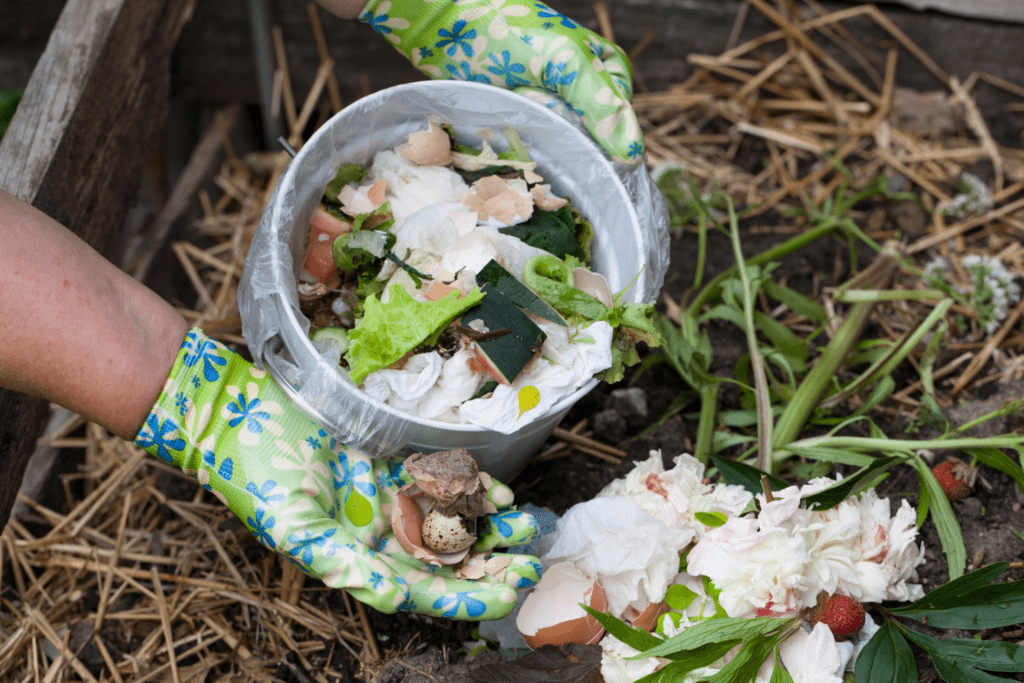
How Do I Determine the Proper Balance of Organic Waste?
It’s important to maintain the right balance of carbon and nitrogen in the compost pile. You’ll find various suggestions of proper carbon to nitrogen ratios all over the internet, however my best suggestion for creating the right ratios of yard debris and kitchen scraps is a simple sniff test. If the compost heap has an earthy smell – you’ve created an ideal environment for aerobic bacteria to transform compostable materials into healthy garden soil.
If the compost pile has a sour or rotten smell to it, you need to add more carbon sources, such as newspaper, dried leaves, and cardboard to neutralize the odor. To help speed up the composting process, you can turn the compost pile regularly to aerate it and add water to keep it moist but not too wet.
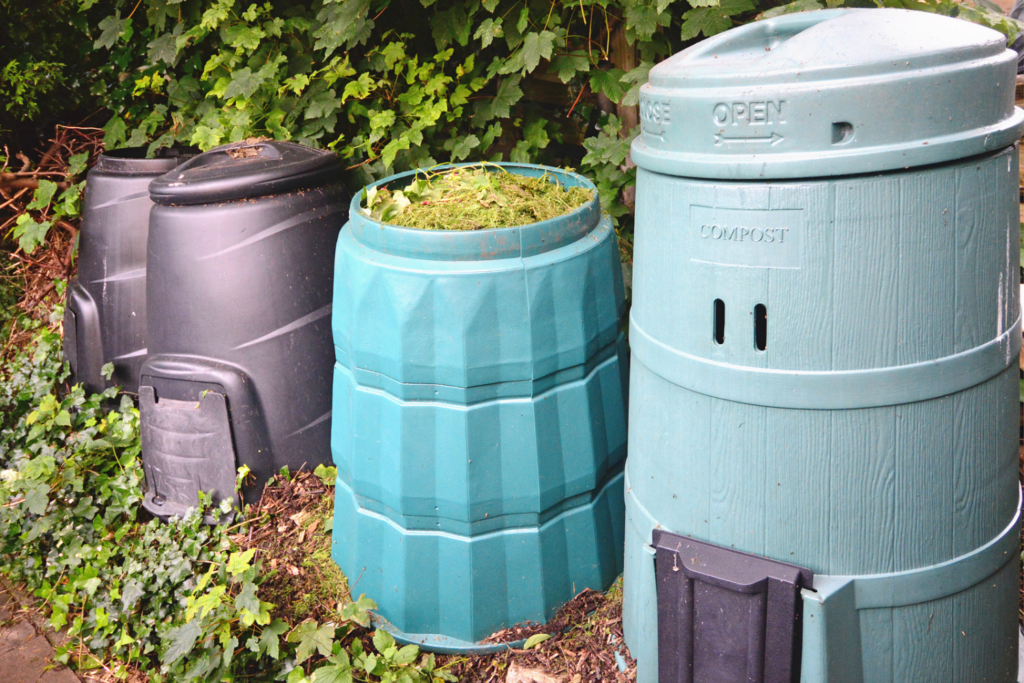
What Tools Are Needed to Start Composting in My Backyard?
To compost in the backyard, you don’t necessarily need any specialized tools, but there are a few items that can make the process easier and more efficient. Here are some tools you might find helpful:
Essential Tools for Composting:
- Compost bin: A compost bin is a container that holds your compost pile and helps contain the composting process. You can purchase a pre-made bin or make one yourself using materials such as wire mesh, wood pallets, or cinder blocks.
- Aerator: An aerator is useful for turning the compost pile to add oxygen and mix the organic matter. Note: If you choose to purchase a compost tumbler, you won’t need this, as the turning action of the bin will aerate your compost.
- Kitchen scrap container: A small container with a lid can be used to collect food scraps inside your home before transferring them to the compost bin outside.
Additional Tools for Composting:
- Garden gloves: Wearing gloves can protect your hands from dirt and any sharp or rough materials in the compost pile.
- Watering can: Adding water to the compost pile is important to keep it moist and help the organic matter break down. A watering can makes it easy to add water to the pile without over-saturating it.
- Thermometer: A thermometer can help you monitor the temperature of the compost pile and ensure it reaches the optimal temperature range for efficient composting.
- Tarp or cover: If you choose to create a compost pile that is open to the air, a tarp or cover can help protect your compost pile from excess rain, which can make it too wet. In addition, a tarp will protect your compost heap from the hot sun, which can dry it out too quickly.
Keep in mind that while these tools can make the composting process easier, they are not essential. You can still compost successfully with just a pile of organic matter and some elbow grease.
A Beginner’s Guide to Backyard Composting
I’ve created a free Beginner’s Guide to Backyard Composting that will guide you through the basics of setting up your first compost pile. Grab your digital copy here:

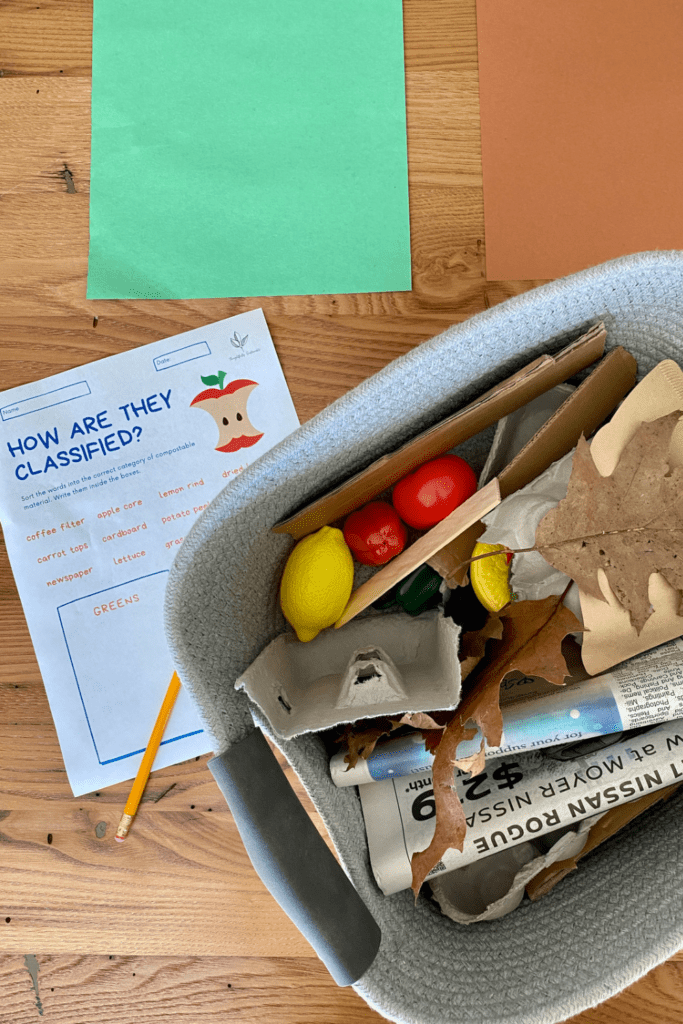
Teaching Kids About Composting
If you’re looking for resources to teach your kids about composting, look no further! Here are some composting educational resources designed for learners of all ages:


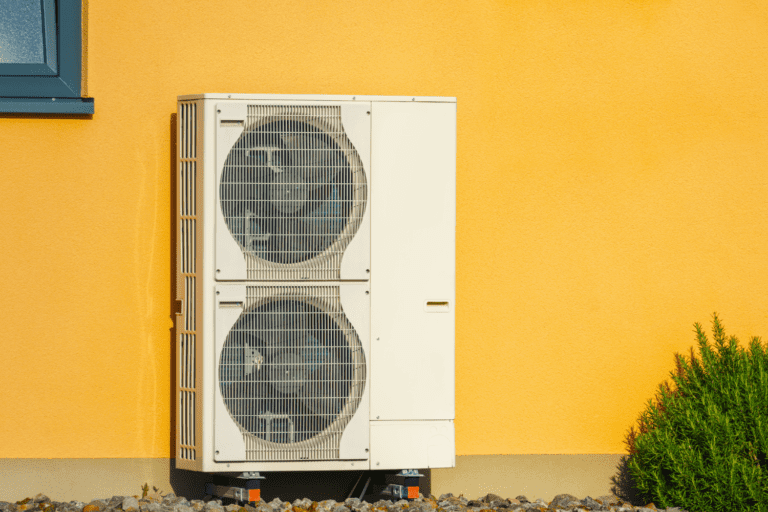
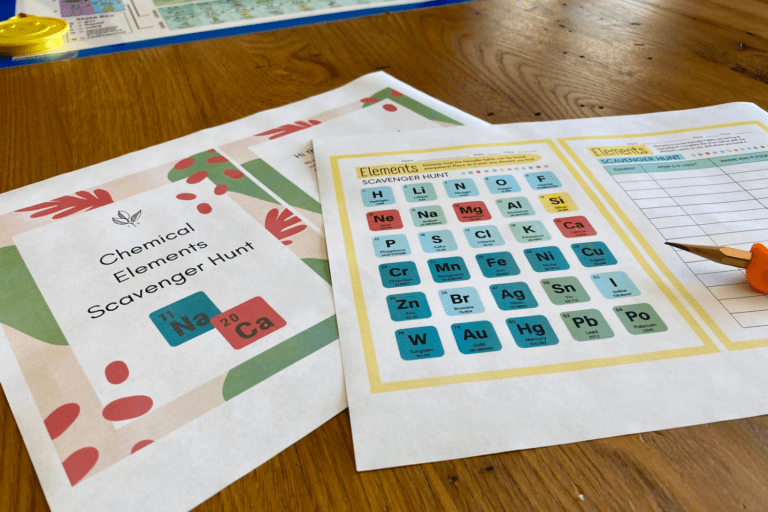
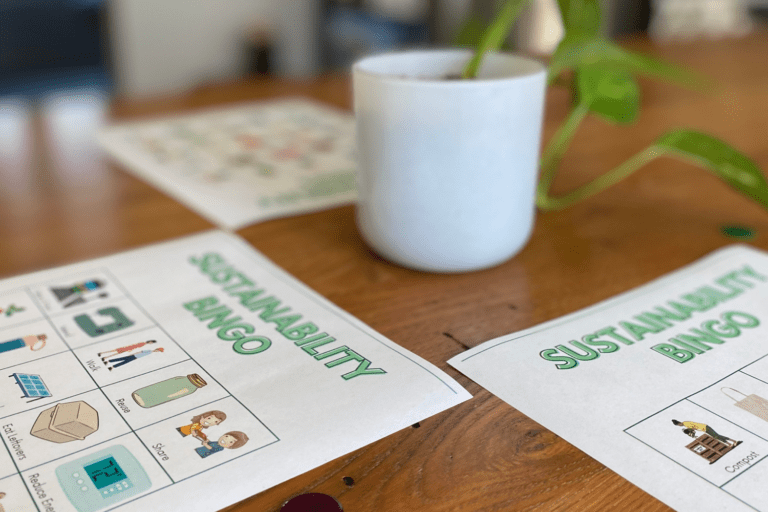
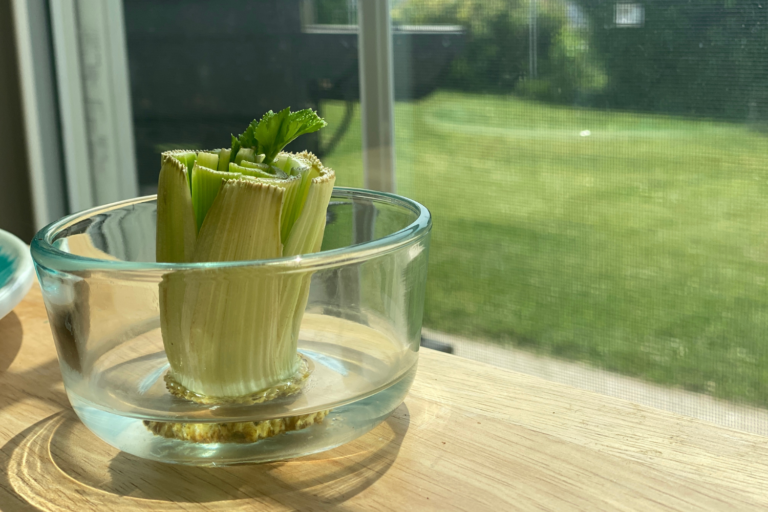
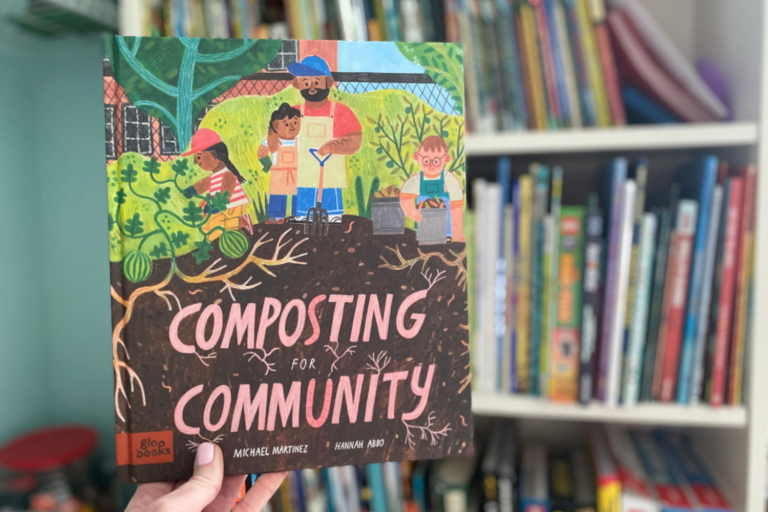
One Comment
Comments are closed.